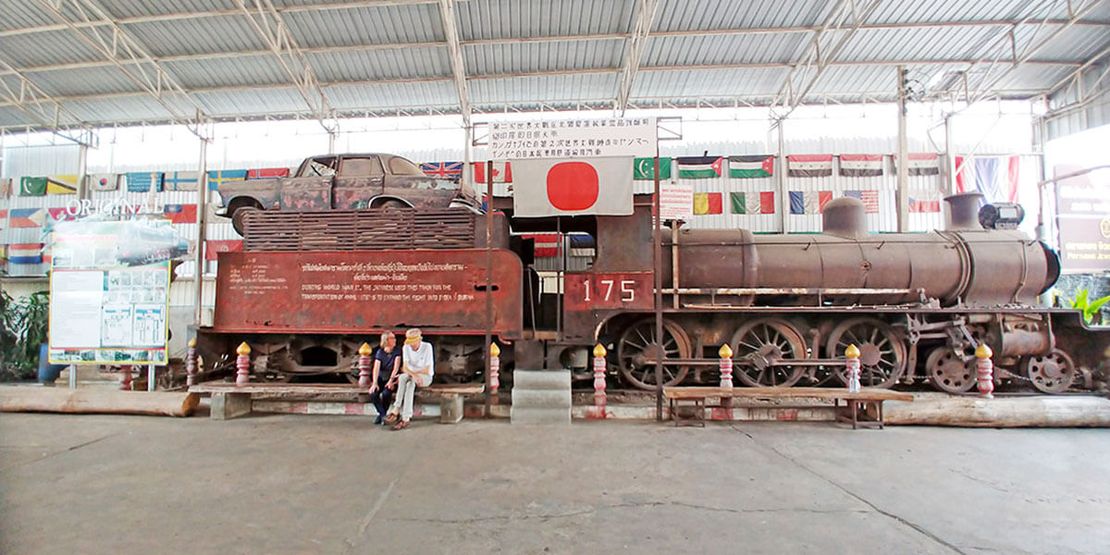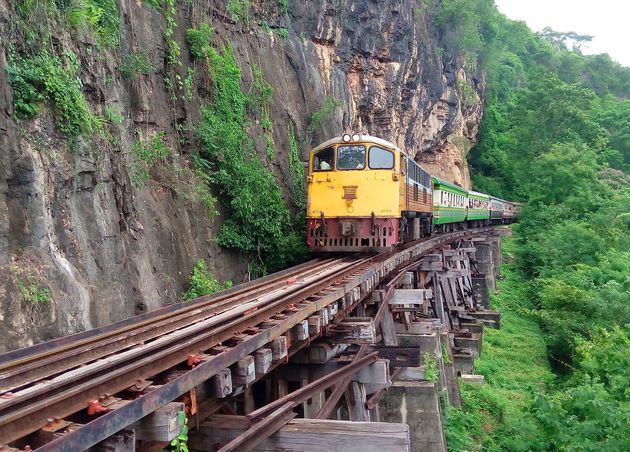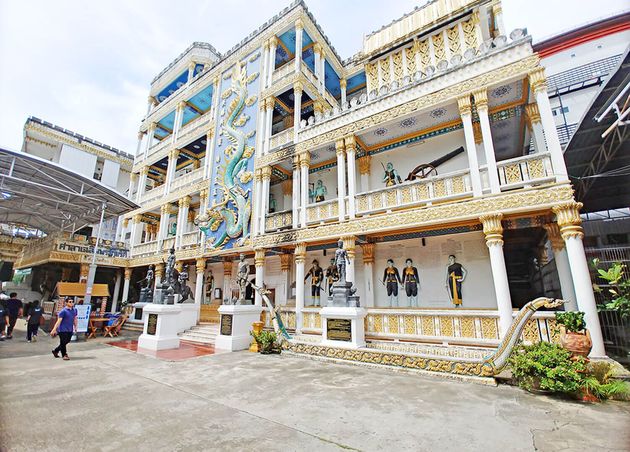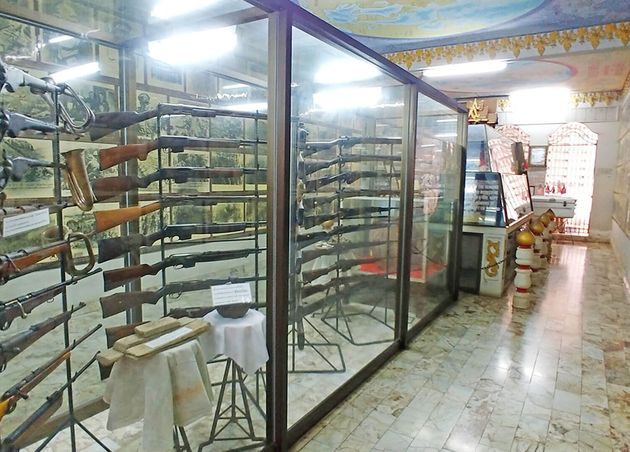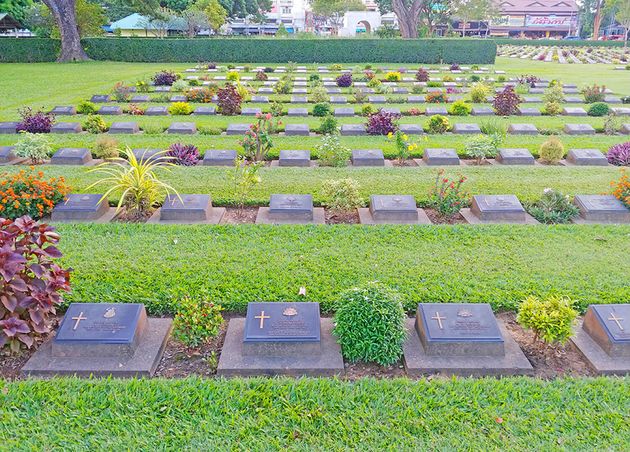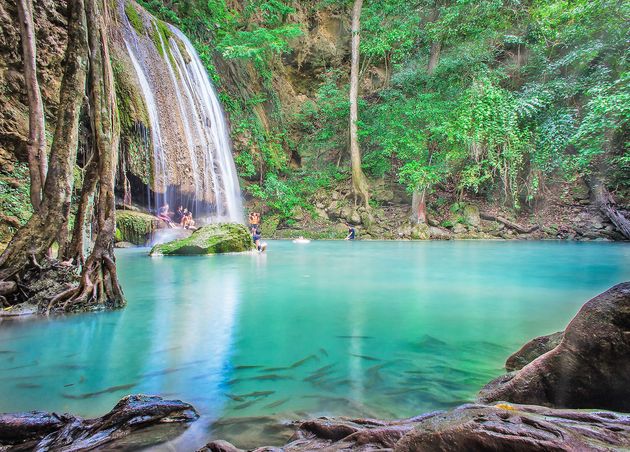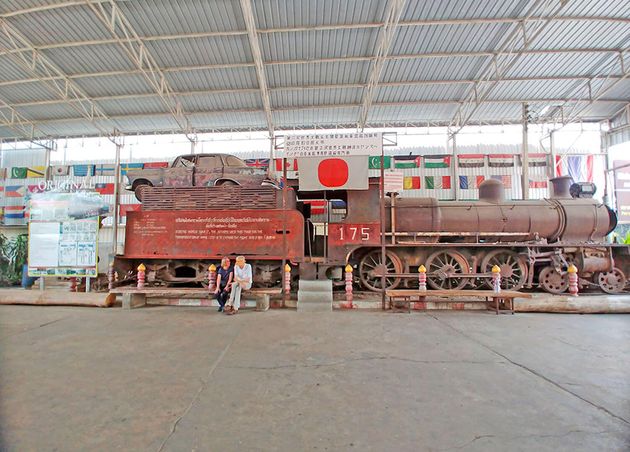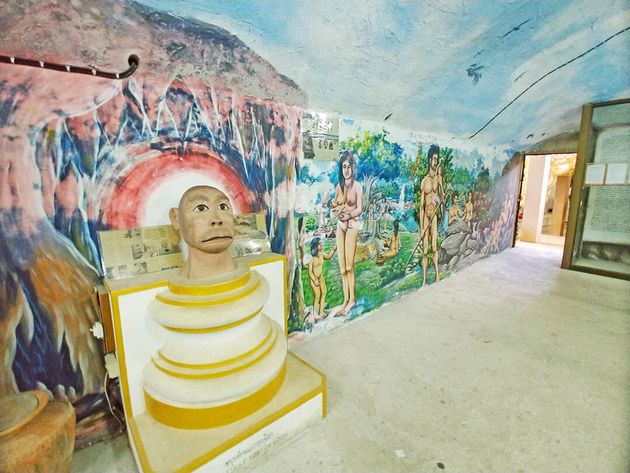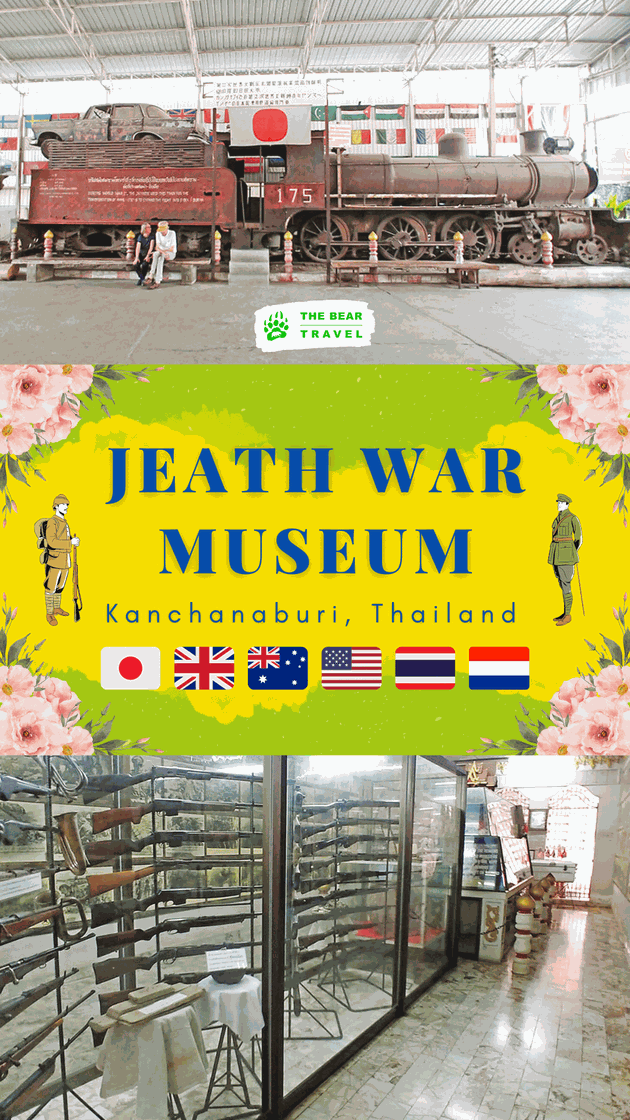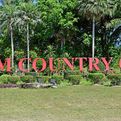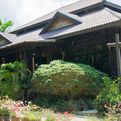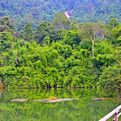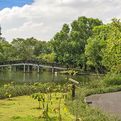JEATH War Museum: Experience the Historical Thai Culture in Kanchanaburi
Located west of Thailand, Kanchanaburi is widely recognized for its Death Railway. The city itself played an important role in World War II. Countless soldiers and laborers went through harsh times during the brutal war. Therefore to experience historical Thai culture and the wars that the nation has fought, the JEATH War Museum in Kanchanaburi is the best place.
It was built as a prisoner-of-war camp in World War II. There is an exhibition of arts, photographs, and tools used in those days. It also portrays the volatile remains of many places during the war.
At the JEATH War Museum, you will discover everything you need to know about Thailand’s wartime days. Thus, come and walk through history and uncover endless secrets of the past.
The acronym JEATH depicts the warring countries that were directly involved in the formation of the Death Railway during those terrible years. It stands for Japan, England, Australia & America, Thailand, and Holland!
A Visit to the Famous War Museum
Founded in 1977 by the Buddhist Temple Wat Chai Chumphon, the JEATH War Museum was the first museum in Kanchanaburi. Built on the surfaces of the temple and governed by the monks who lived there, the museum was expanded to educate new tourists to the area on the experiences of those who worked on the Thai-Burma Railway and honor those who lost their lives along the way.
Located on the river bank at the corner of the Khwae Noi and Mae Klong rivers, close to the well-known ‘Bridge on the River Kwai, the museum’s name is an acronym of those countries implicated in the Thai-Burma Railway – Japan, England, Australia, Thailand, and Holland. At the entrance to the museum, each of these countries has its national flag on display.
The museum is divided into two sections. One building displays an assortment of objects from the war, mostly compiled around Kanchanaburi, comprising the Prisoner of War camps, the bridge building sites, and the railway. Weapons, tools, uniforms, medals, and other personal items; each inform the visitor of the soldiers’ day-to-day life of both the Allied and Japanese troops.
One of the most unique items is a 500-pound bomb that was dropped on the railway bridge as a deterrent to stop the Japanese from the building. The bomb, however, never exploded and now sits in the museum yard.
JEATH War Museum Travel Tips 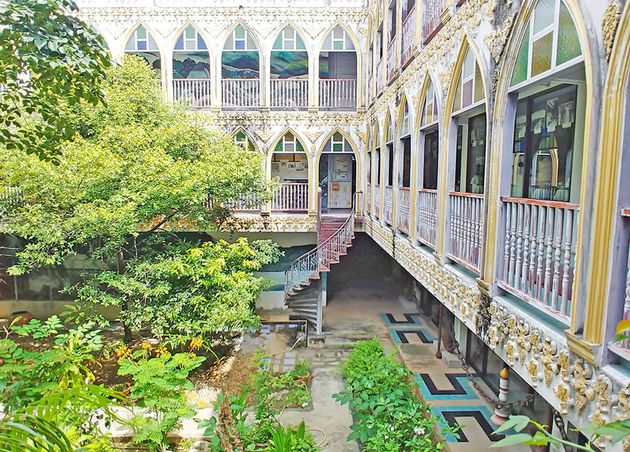
- Very crowded on public holidays.
- The images are very graphic.
- Preferred time to visit is 11:00 am - 02:00 pm
- The time required to visit is approximately 02:00 hours
The other part of the museum comprises small bamboo huts – a replay of the rooms POWs were obliged to live in at the prison sites. Inside the huts, photographs, paintings, and portraits show the awful living situations the men were made to survive, the food they were fed, and the diseases that swept through the camps.
Pretty basic in its exhibition, the JEATH Museum facilitates travelers to engage themselves, at some level, in the environment the POWs experienced, in turn revealing the misery and connection that happened at prison camps during World War II.
The JEATH War Museum is governed and protected by monks who live and pray at the neighboring Wat Chai Chumphon.
Attractions Near the JEATH Museum
Prasat Muang Sing Historical Park
(Location: 28.29 km from JEATH War Museum)
Muang Singh Historical Park captioned the Western border of the Khmer in Thailand. At the height of its power, the vast Khmer empire stretched all the way West, deep into present-day Kanchanaburi province in Western Thailand.
Tiger Temple
(Location: 30.61 km from JEATH War Museum)
Located in the Sai Yok District of Thailand's Kanchanaburi Province, Tiger Temple, also known as Wat Pha Luang Ta Bua Yanasampanno, was a temple of the Theravada Buddhist tradition situated in the western part of the country. It was established in 1994 as a forest temple and oasis for wild animals, among them tigers, mostly Indochinese tigers.
Kanchanaburi War Cemetery
(Location: 2.43 km from JEATH War Museum)
The cleanly maintained cemetery contains the remains of 6,982 Allied POWs who died during the construction of the ‘Death Railway. Its calmness remembers the visitors of the war and its after-effects. It is now one of the main interests in Thailand.
Sai Yok Noi Waterfall
(Location: 52.96 km from JEATH War Museum)
Sai Yok Noi Waterfall, known as "Khao Phang Waterfall,” is a well-known waterfall with limestone cliffs that became the origin of the name "Khao Phang Waterfall.”
Erawan National Park
(Location: 53.84 km from JEATH War Museum)
Located in West Thailand in the Tenasserim Hills range of Kanchanaburi Province, it is home to one of the most prominent falls in the country. Established in 1975 as Thailand’s 12th National Park, it covers an area of 550 km². The park's main attraction is the 7-tiered Erawan Falls with emerald green ponds.
Why Visit the JEATH War Museum in Kanchanaburi?
Visiting this first war museum of Kanchanaburi, you will find the wonderful stories of the past, both good and bad, through the assortments of artworks and photographs. Many of which are natural antiques!
Walking inside the JEATH War Museum, you can endure the lives of wartime prisoners. Make sure to look at their camp's representation and see what it's like sleeping on a bamboo panel floor. You'll come across real-time Thai and overseas newspapers and postcards along the way. Moreover, read and discover what things were like back in the day of the severe battle. Furthermore, you can see the souvenirs from nearly 100 years ago, ranging from soldiers' water bottles to bombs and the stories of wartime survivors!
Of course, by visiting the JEATH War Museum, you will not need to miss Kanchanaburi’s trios! Trace back to the beginning of this whole story at the Death Railway, or Burma Railway. Cherish the 415-kilometers-long track built in 1943 with the dramatic background of the serene River Kwai. Here, walk across River Kwai Bridge, the popular setting of the Hollywood film “The Bridge on the River Kwai'' back in the 1950s.
The place is also well known as the symbol of peace. So yes, it is an excellent time for your snap! If you need a bit of mystery and journey, just a short walk from the Death Railway situated “Tham Krasae Cave ''. By taking a stroll on the track, you can cherish the sideway view and discover the Buddha’s statue inside!
Highlights include:
- The Graphic Photographs
- Physical memorabilia
- Thatched Detention Huts
- Written accounts of former POWs
- A section of the Bridge
This is a practical way of bringing you back in time. You are surprised by how harrowing the experience must have been for the victims. Thailand has so much to offer. Its history is hidden in every corner. Among them, Kanchanaburi's JEATH War Museum is worth visiting in Western Thailand.
How to Visit the JEATH War Museum in Kanchanaburi?
It is located just to the west of the center of Kanchanaburi, near the intersection of the Khwae Yai and Kwae Noi rivers, 4.5 km south of the outstanding Bridge Over the River Kwai in Western Thailand.
The JEATH War Museum is close to the center of Kanchanaburi, within walking distance of the bus station. From the Bridge over the River Kwai, it's about 4.5 km to the southeast, so when beginning from there, you may need a taxi or cycle. Don't get tricked and be directed to the Kanchanaburi World War II Museum, which is much closer to the Bridge. That may be worth a look in its own right, but it is really not the original JEATH War Museum. The real thing is a part of the Wat Chai Chumphon temple complex further south.
You can rent a Songtaew (10 Baht)/ Tuk-Tuk (20 Baht) from the town center.
The museum shows actual items that were used for the construction of the Death Railway. It also displays an extensive collection of photographs taken by prisoners at the time, including graphic images of the severe circumstances that the men lived and worked.
Map & More Information
The JEATH War Museum is a museum in Kanchanaburi devoted to the story of the men who worked on the Death Railway. JEATH is an acronym for the several nationalities of the POWs (Japan, England, America, Australia, Thailand, and Holland) that worked on the bridge between 1942 and 1943. The museum displays the actual items that were used for the construction of the Death Railway.
|
Fees |
30 Thai Baht |
|
Business Hours |
08:30 AM - 04:30 PM | Monday - Sunday |
|
Business Address |
2GR4+H36, Ban Tai, Mueang Kanchanaburi District, Kanchanaburi 71000 |
|
Contact Number |
+66 (0) 3 451 5203 | +66 (0) 3 451 2596 |
|
Facebook Page |
|
|
GPS |
14.0414168, 99.5051271 |
The Bear Team
We, The Bear Team, are a united group of digital experts and adventurers. Combining technical skills with creative flair, we deliver informative, valuable, up-to-date content. Whether seeking travel inspiration or innovative solutions, we're your go-to for fun, authentic, impactful, and timeless experiences.
The Bear Travel | Experience like a Local
A fast-growing Thailand Travel Blog written by Expats and Thais since 2017. We will share our experiences and ideas from an insider point of view for you to create your own unique Thailand experience.
For the latest news and events about The Bear Travel, follow us on Facebook, Instagram, Twitter, Pinterest, or YouTube.
For any issues, concerns, or queries, don’t hesitate to CONTACT us.
Recommended for you
Chaipura KC Resort: Escape to Paradise in Koh Chang
The Bear Team
Travel to Chanthaburi Guide: Everything You Need to Know
The Bear Team


